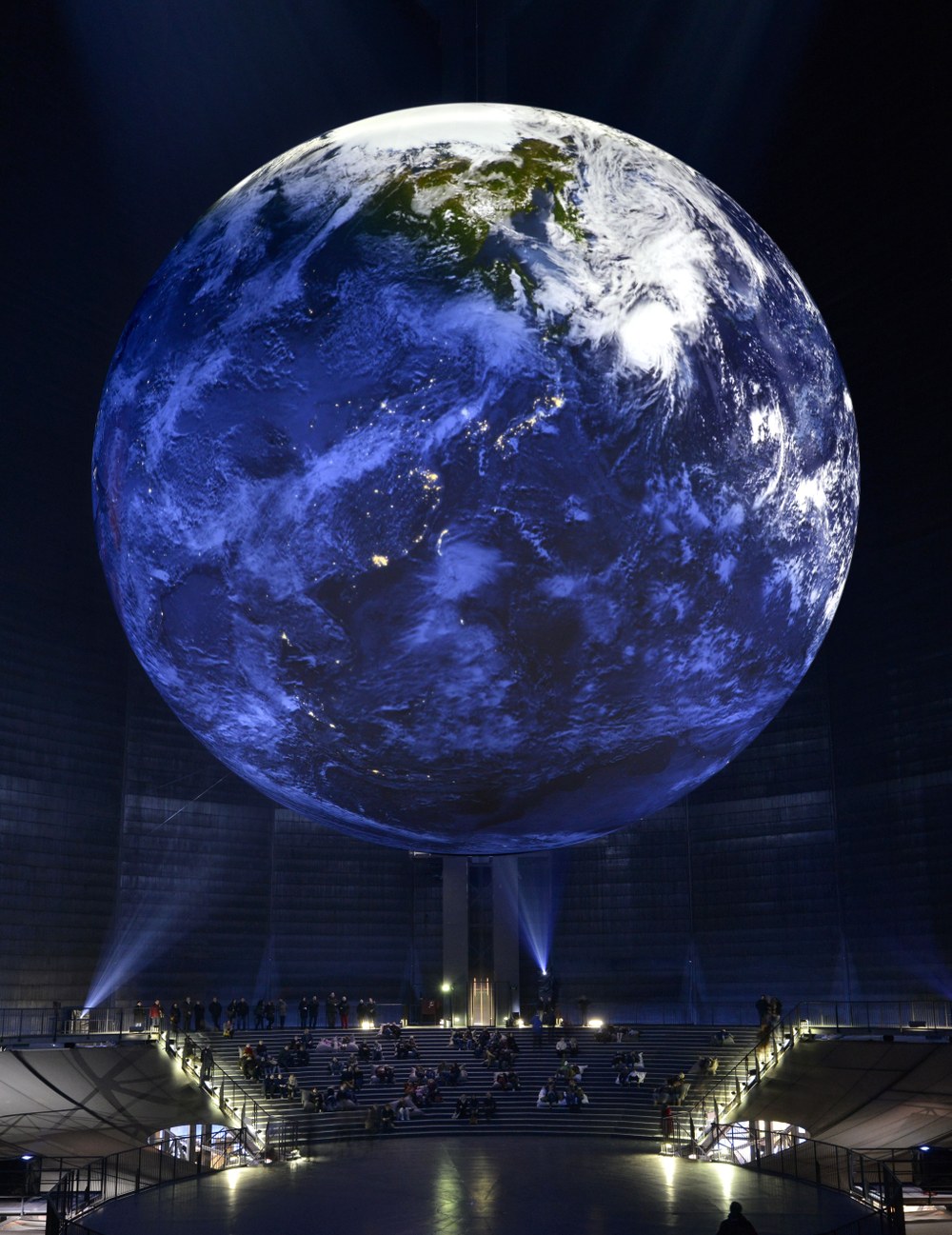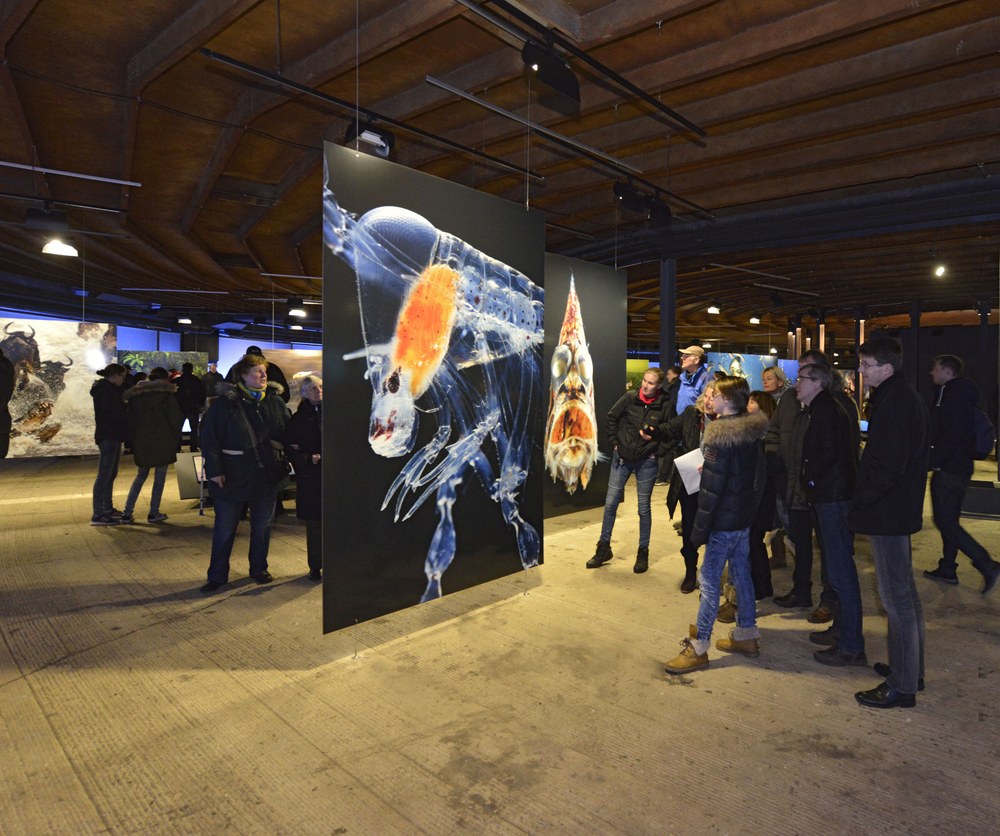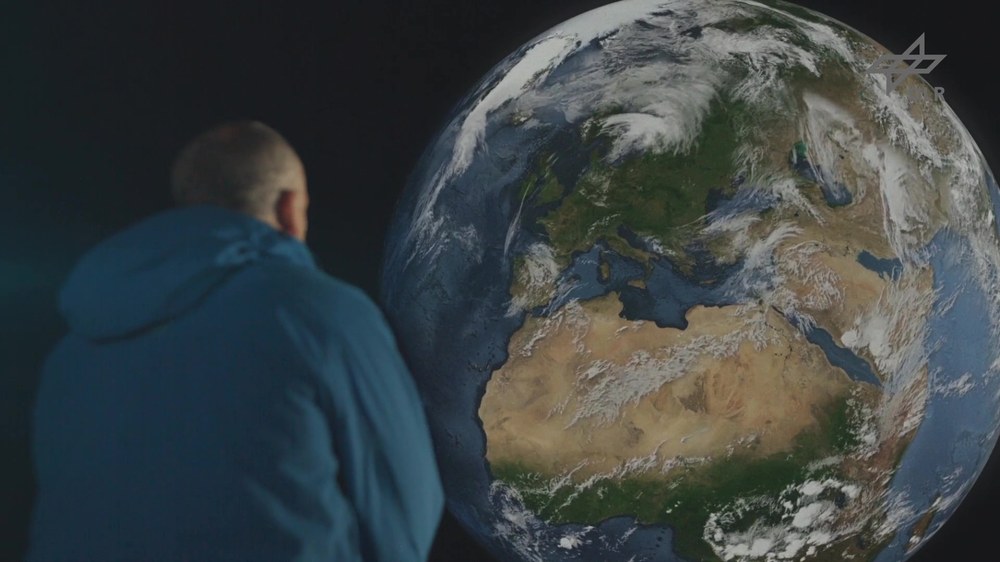Possibly the world’s largest globe

©Thomas Wolf

Thomas Wolf

Thomas Wolf
What is probably the world’s largest projection of Planet Earth can be seen at the Oberhausen Gasometer since 11 March. A globe with a diameter of 20 metres is suspended in the 100 metre high tower of this industrial monument as the highlight of a new exhibit, "Nature Wonders". The animations projected on the globe were provided by EOC. In the platforms underneath, an exhibition curated by Peter Pachnicke features 150 large-format photos of animals and plants produced by leading photographers, including Frans Lanting, Rob Kesseler, Tim Flach and Anup Shah.
Hundreds of satellites are orbiting the earth. But none of them alone can provide the spectacular view available to visitors of the Gasometer. Weather satellites always look at the same portion of the earth from an altitude of 35,000 kilometres; other satellites orbit the planet from a distance of seven to eight hundred kilometres, scanning the earth in narrow strips. Some of them are optimized for land and ocean surfaces, others for detecting forest fires, the light given off by cities, or moving bands of clouds. All of them can see more than people can, since they record also in wavelengths inaccessible to the human eye. Thus they can reveal air currents in the atmosphere and their moisture content, or the state of vegetation by detecting the infrared radiation it reflects.
More than ten data sets reflecting these quite different aspects were combined at EOC to create a single overall composite view of the globe. The 58 million pixel resolution of the complete composition is seven times higher than that of a conventional digital film. Twelve projectors installed in the Gasometer assure a seamless presentation on the surface of the huge balloon. In order to provide each section with the correct image excerpt, the virtual image of the earth was precisely placed at the intended location in a digital reproduction of the Gasometer and then recorded by twelve virtual cameras. During more than 115 days of computing time, 11,264 gigabytes and over one and a half million individual images were generated. Some 650,000 of them can be seen at the Gasometer at a projection resolution of 27 million pixels. The planning and technical realization of the projection was the responsibility of the Intermediate Engineering company. The balloon was manufactured by the “geo – die Luftwerker” company, which also executed several of Christo’s works of art.
Whoever wanted to once view the earth from the perspective of an Apollo astronaut or a satellite now has a chance to do so at the Gasometer. A panorama elevator on an inside wall of the Gasometer takes viewers up 100 metres. The view of the earth from this vantage point is equivalent to that seen from a distance of some 36,000 kilometres, which is the orbital altitude of geostationary weather satellites.

Oberhausen Gasometer: Exhibition "Nature's Wonders"
Your consent to the storage of data ('cookies') is required for the playback of this video on Quickchannel.com. You can view and change your current data storage settings at any time under privacy.
